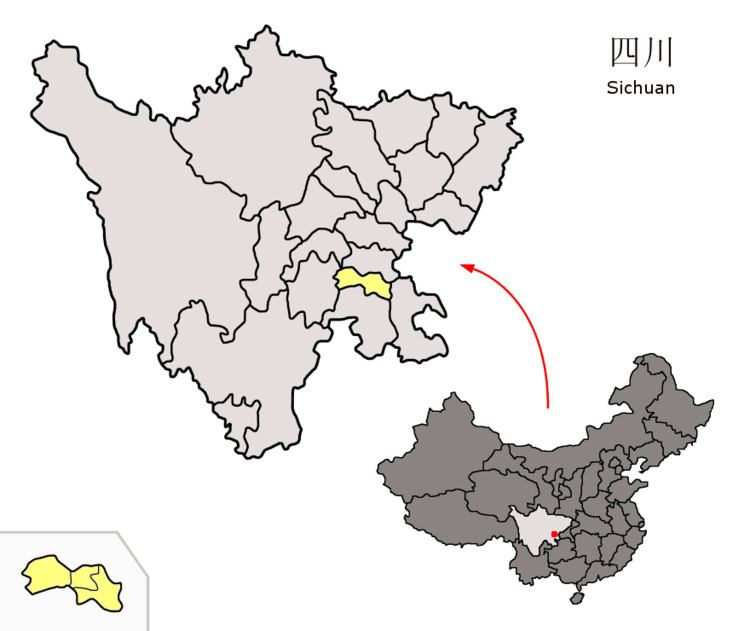Native to China | Glottolog None | |
 | ||
Native speakers 3.5 million (date missing) Language family Sino-TibetanChineseMandarinSouthwesternSichuaneseRenshou-Fushun dialectZigong dialect | ||
Zigong dialect (simplified Chinese: 自贡话; traditional Chinese: 自貢話; pinyin: Zìgòng huà; Wade–Giles: Tzu-kung hua) is a branch of Southwestern Mandarin, spoken mainly in Zigong, Fushun, Weiyuan, east Rongxian and some parts of Yibin, Neijiang, Longchang and other neighboring areas.
Contents
At least four Chinese dialects are spoken in Zigong City: Zigong dialect, Rongxian dialect, Hakka and Minjiang dialect. A majority of people in Zigong speak Zigong dialect. However, most people in Rongxian, a county of Zigong City, speak Rongxian dialect, whose pronunciation is quite different from that of Zigong dialect. Besides, owing to a great number of Hakka immigrants in history, a small number of Hakka people in certain towns also remain to speak Hakka. Also, Minjiang dialect is spoken in a few remote towns or villages bordering to Luzhou, Leshan and Yibin.
History
Zigong dialect differs from other branches of Sichuanese Mandarin. Modern Zigong dialect was formed rather recently in a great wave of immigration after the Qing Dynasty.
Immigrants played a crucial role in the formation of the new Zigong dialect. Zigong has long been known as the "Salt Capital" for its brine extraction techniques and the attendant salt-related culture. In ancient China, salt was regarded as the energy for body and valued even more highly than gold. Therefore, salt trading was always the most profitable business and salt merchants were the wealthiest people. Hence many merchants, mainly from Hubei, Henan, Jiangxi, Fujian, Shaanxi, Shanxi and Guangdong, flooded into Zigong, bringing their Chinese varieties with them.
Phonology
There are four phonemic tones in Zigong dialect: dark level tone, light level tone, rising tone and departing tone. The four tones all have different pitches vis a vis Mandarin. The ancient checked tone of Chinese has been redistributed entirely into departing tone.
There are 24 initials in the Zigong dialect. Zigong dialect can clearly differentiate retroflex consonant and alveolo-palatal consonant, while most dialects of Sichuanese Mandarin can not.
There are 38 finals in the Zigong dialect.
Words with Different Meanings
These words have meanings in Zigong Dialect entirely different from those in Mandarin.
